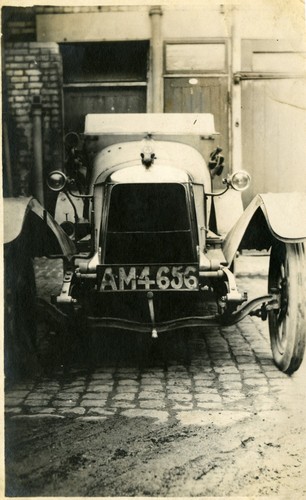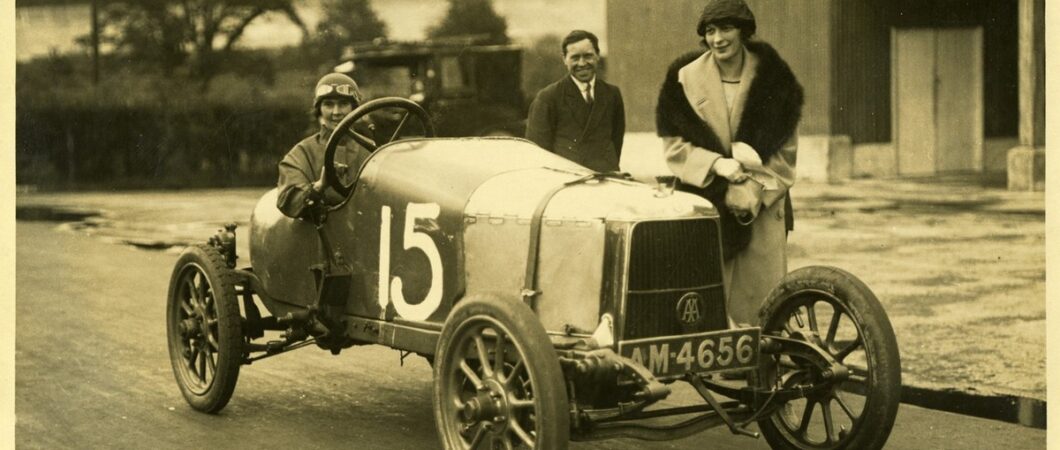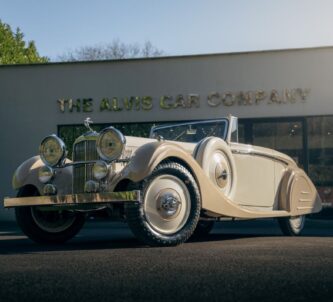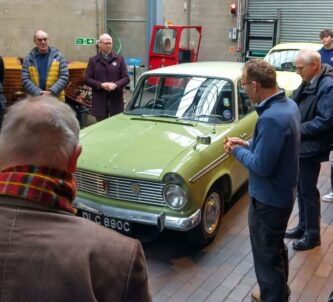The search is on for a priceless piece of British luxury car brand Aston Martin’s earliest history. A1 was the very first car to be built by Bamford & Martin Ltd, the company that would quickly become Aston Martin. Nicknamed ‘Coal Scuttle’ because of its simple styling that was, to many, redolent of the ubiquitous fuel container that almost every home in the nation would have had a century ago, the car was created in the summer of 1914 and, over the course of the next ten years, helped the company’s founders publicise their business.
However, Aston Martin sold its earliest model for the princely sum of £50 in 1924 and, not long after that, the car disappeared entirely. Now, 110 years after its manufacture and 100 years after its sale, the Aston Martin Heritage Trust (AMHT) is launching a global hunt for this unique piece of the brand’s history.
Ahead of the Trust’s annual festival, which this year takes place at the British Motor Museum, Gaydon, on Saturday 31 August, the AMHT is asking car enthusiasts around the world to check their garages, outhouses, barns and stores for any potential traces of the missing car.
Trust Treasurer, Garry Taylor, said: “We are very fortunate here at the AMHT to have the oldest known Aston Martin in existence, now known as A3, along with extensive records from the earliest days of the company and priceless artefacts from across the history of the brand, but, to date, ‘Coal Scuttle’ has eluded us. We are appealing for car enthusiasts to help us find that very first car, or discover definitively what became of it.”

where she was built. (Photo: AMHT)
Built in 1914, by a small team of engineers led by marque founders Lionel Martin and Robert Bamford, this first car aspired to be a high-quality sporting car rival to the likes of Bugatti. The First World War interrupted its development, although Lionel Martin was still able to formally register the car as an ‘Aston-Martin’ on March 16, 1915.
Bamford had fought in France during the war and, having survived both the conflict and the Spanish Flu pandemic, he opted to leave the business to concentrate on a quieter life with his wife and daughter, passing on his shareholding to Kate Martin, wife of his former business partner Lionel.
As Bamford & Martin Ltd regrouped in 1919 it entered its lone car, ‘Coal Scuttle’, in the first available UK sporting event, the London to Edinburgh Trial. This was a true test of machinery, driving all the way on rough roads and tracks with all manner of pitfalls possible. Thankfully the car completed the event in good time, earning a Gold Medal in the process.
‘Coal Scuttle’ was constantly tested and developed throughout the early 1920s, racing at Brooklands and being driven all over the UK – often posing for photos at its stops, including a salmon fishing trip to Loch Awe in Scotland.
The AMHT holds a significant collection of these images and closer examination reveals that the car had more than one set of front fenders, a variety of lamps, horns and mechanical upgrades during its busy life.
Are the rusting remains in an orchard somewhere or hidden in a barn?Its life history has been carefully researched and recorded, first by the Registers of the Aston Martin Owners’ Club and, for the last quarter of a century, by the Aston Martin Heritage Trust. Its last known entry was its sale, for £50, in 1924. Then, the trail goes cold. £50 was a reasonable amount of money in the mid-1920s, so it is unlikely the car was scrapped at that point, but nothing else is known about its activities after that.
Aston Martin company historian and AMHT Trustee, Steve Waddingham, takes up the story: “I am fascinated by this car and I have often wondered what might have happened to it. If it was eventually scrapped, did parts of it survive, such as the beautiful radiator housing? Being the first Aston Martin, the car lacked any external badges so, if the radiator was saved as a memento, is it hanging on a wall somewhere, unidentified?
“Did the well-worn open body get replaced? Was the chassis used to build a ‘special’ or some sort? The oldest known Aston Martin, prototype A3, had survived for many years hidden under homemade bodywork. So, in a similar vein, did ‘Coal Scuttle’ live on in another form? Are the rusting remains in an orchard somewhere or hidden in a barn? Anything is possible.”
Steve adds: “In what would have been, and may still be, its 110th year, we would love to know the whereabouts or fate of our very first car. We are asking enthusiasts to check their automobilia collections, outhouses, stores and, yes, even orchards! If anyone knows more about the car, or has unidentified automotive remains they think could be relevant, we would dearly love to hear about it.”
Anyone who does feel they can shed more light on the whereabouts, or fate, of ‘Coal Scuttle’ is asked to contact that AMHT via its website: https://amht.org.uk/contact/
Feature photo: Kate Martin, wife of Aston Martin founder Lionel Martin, in Coal Scuttle, with mechanic Jack Addis alongside. (AMHT)







